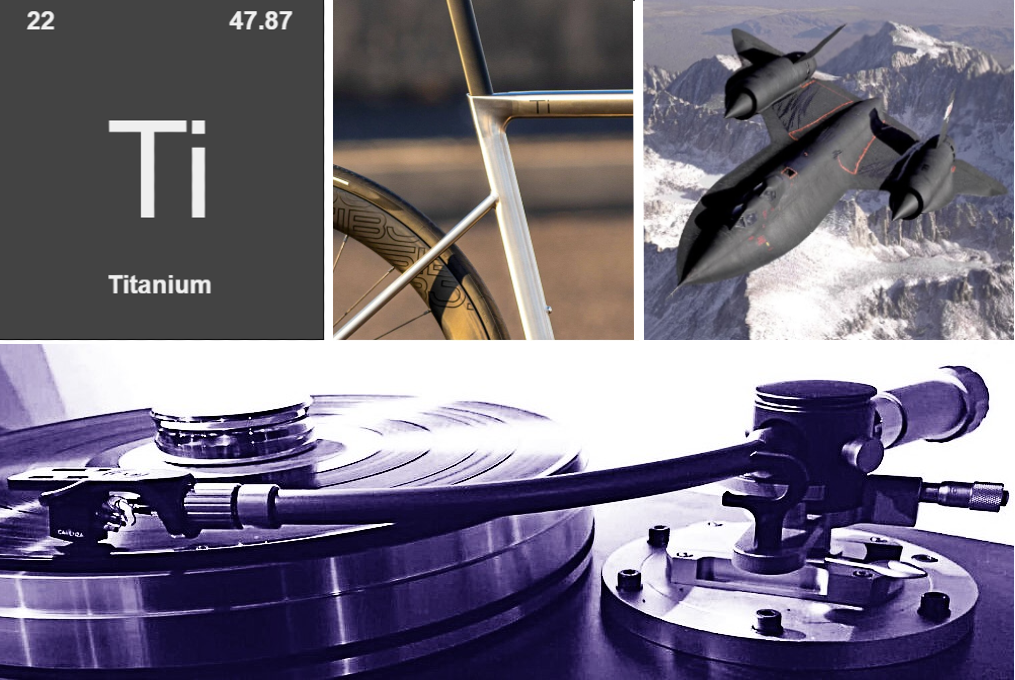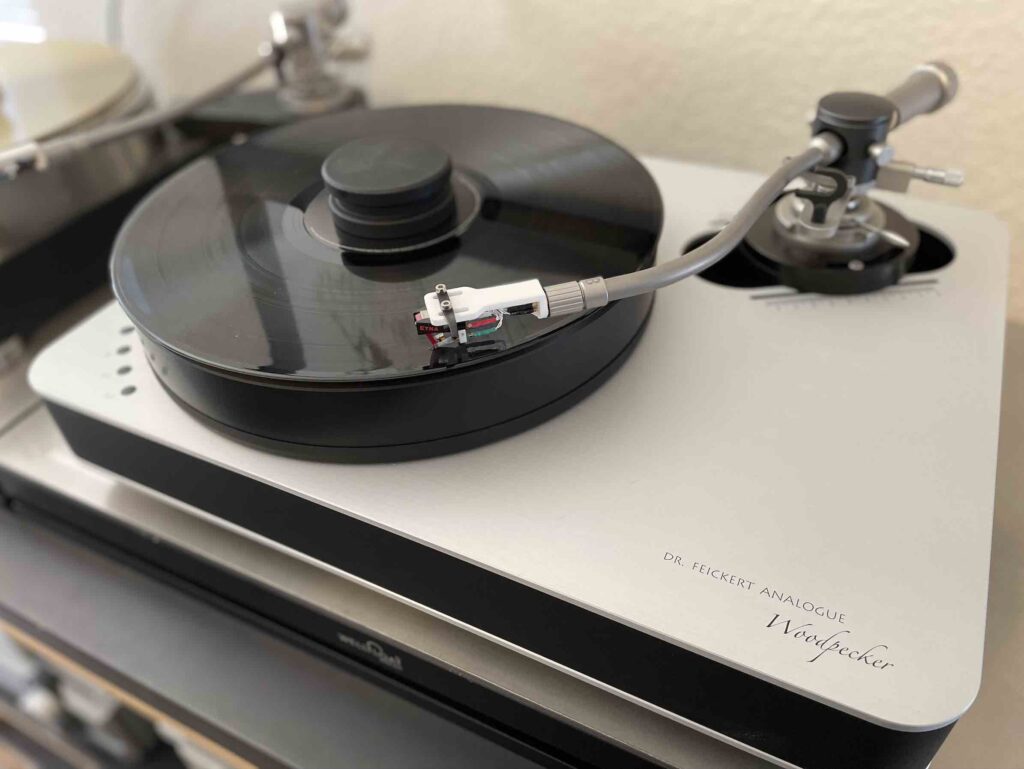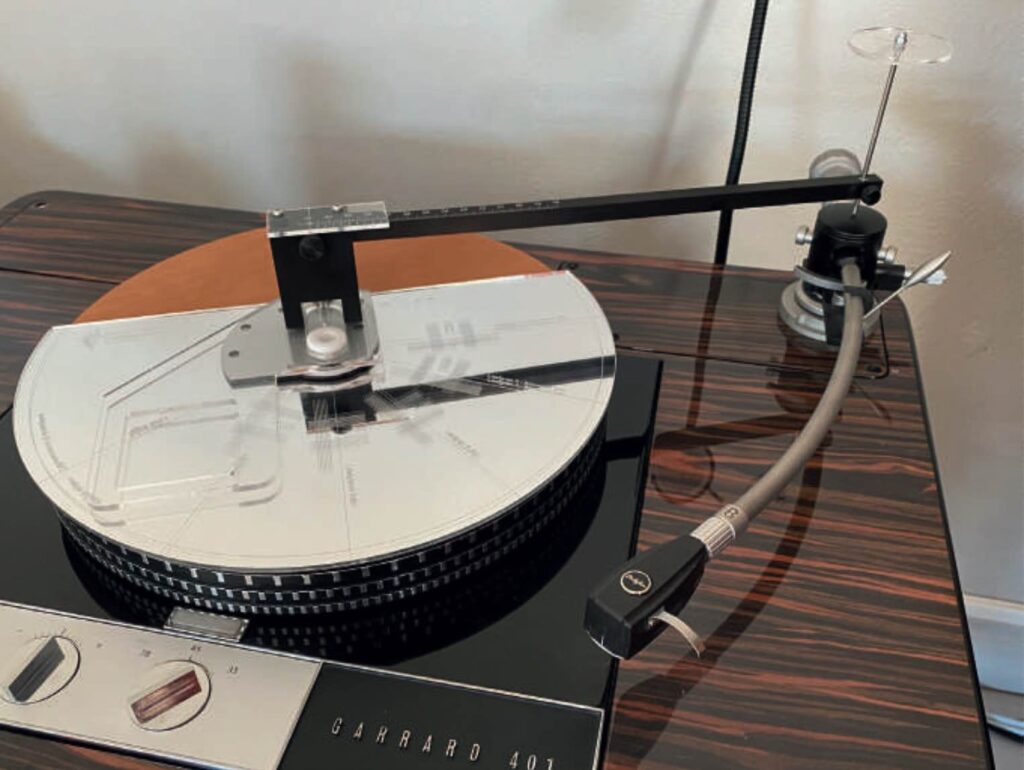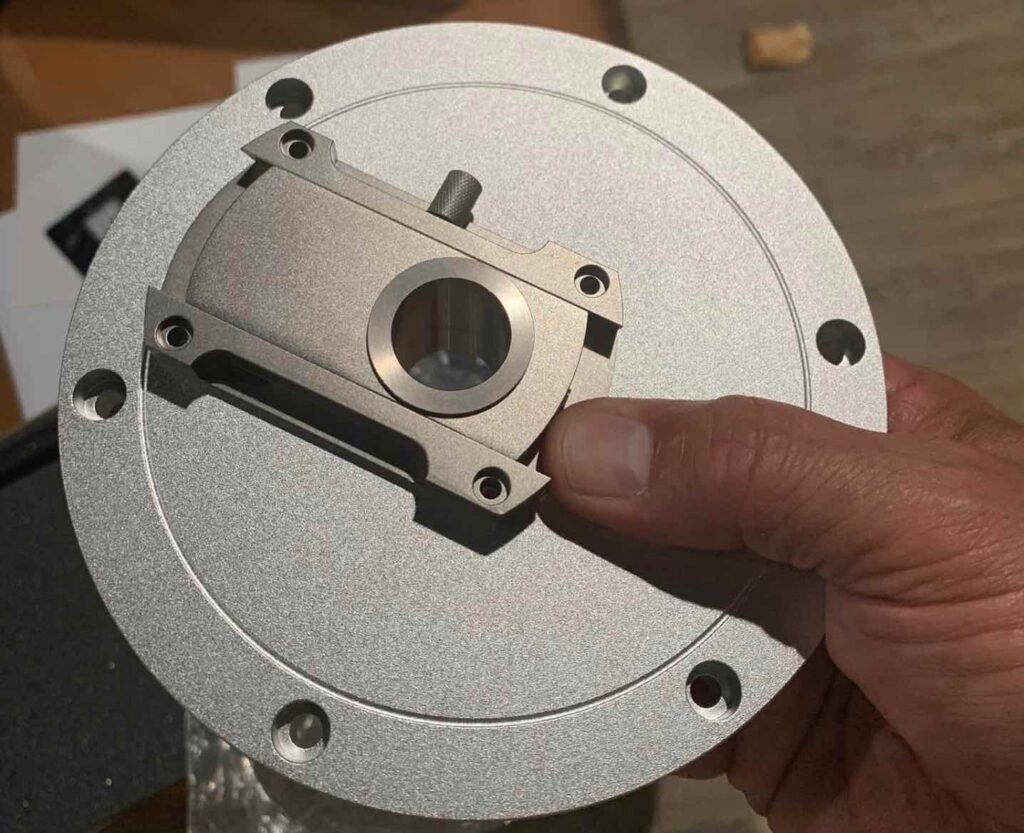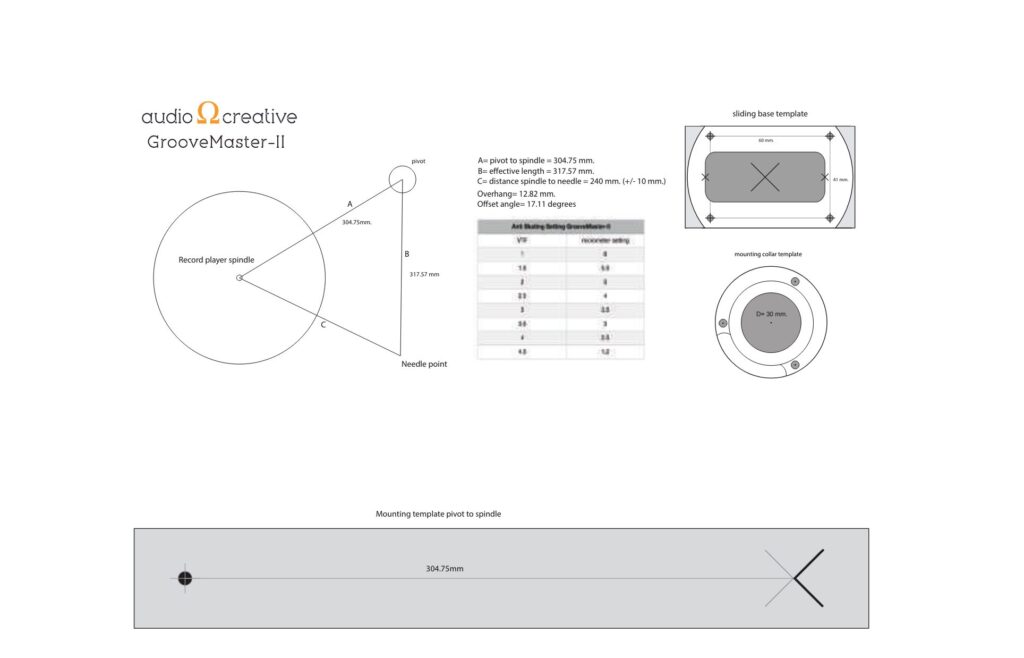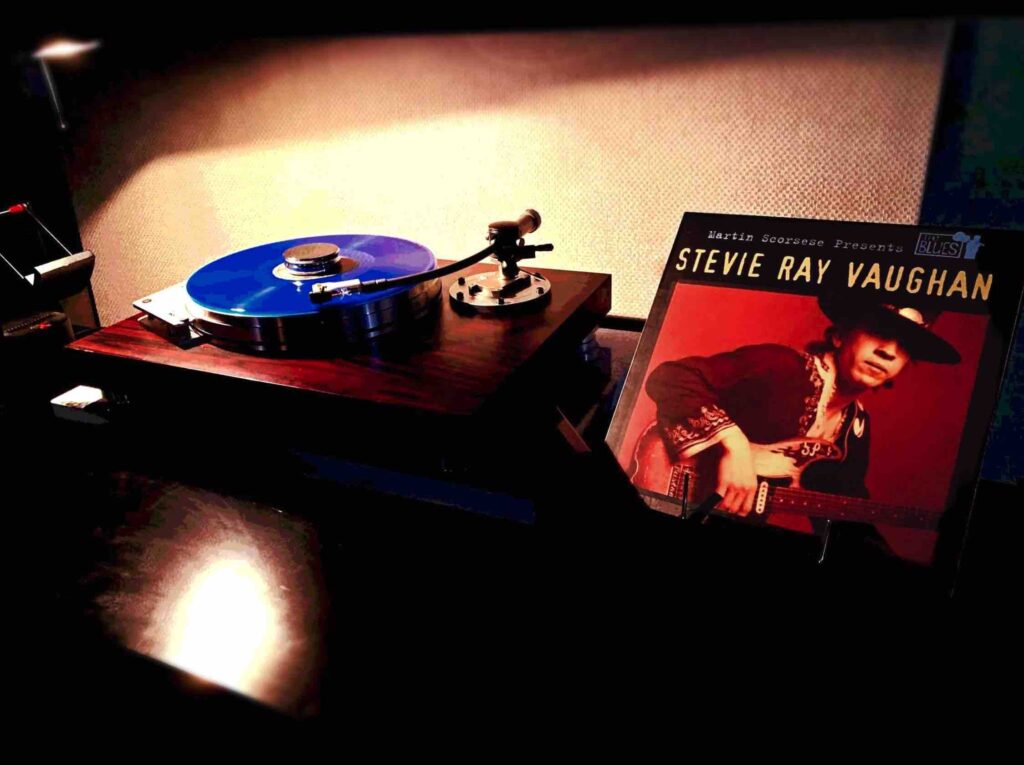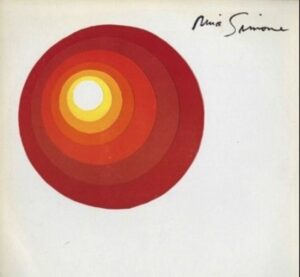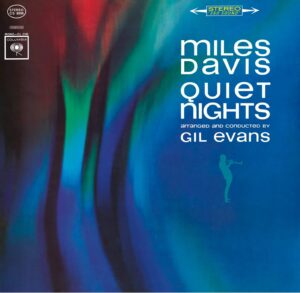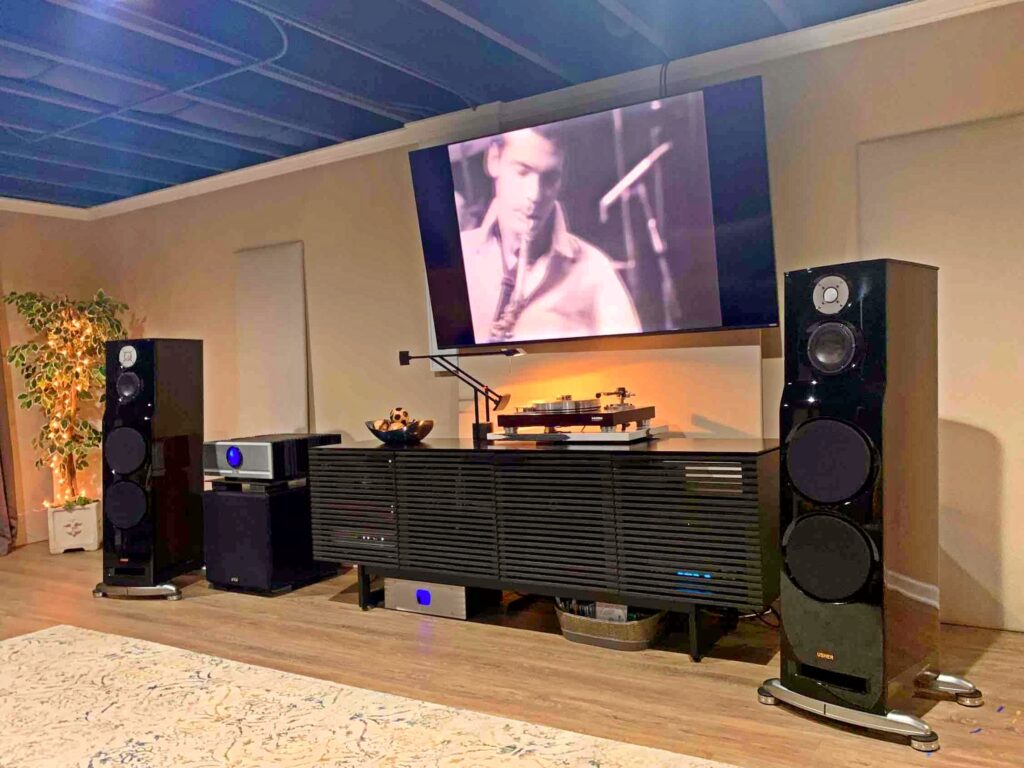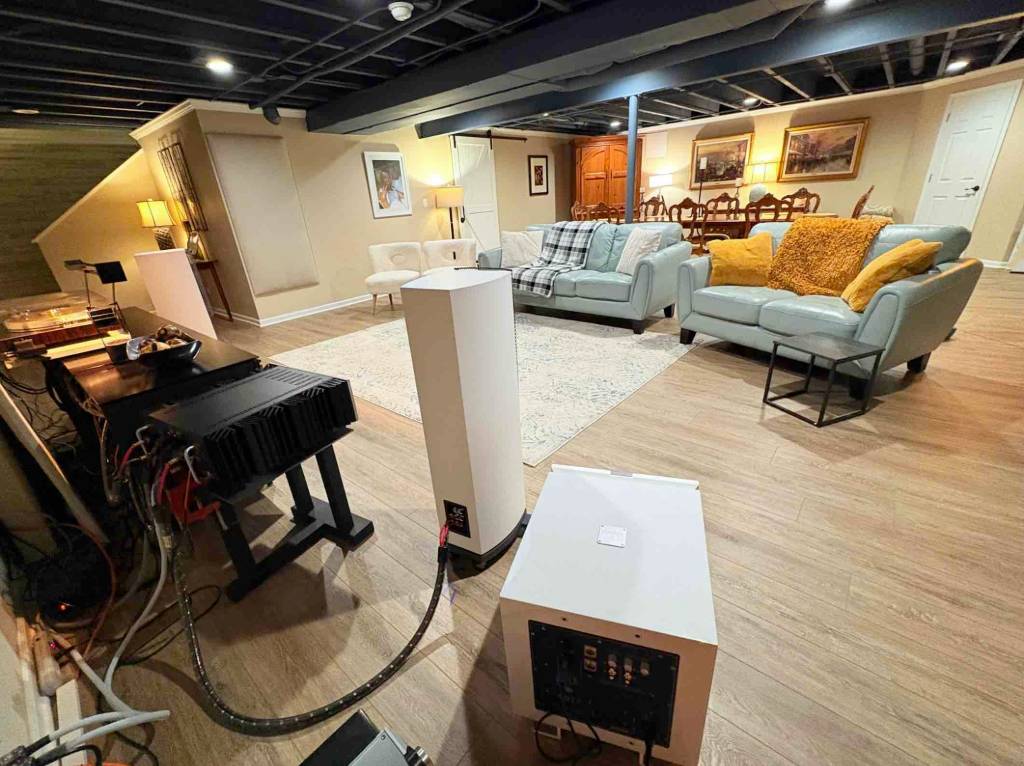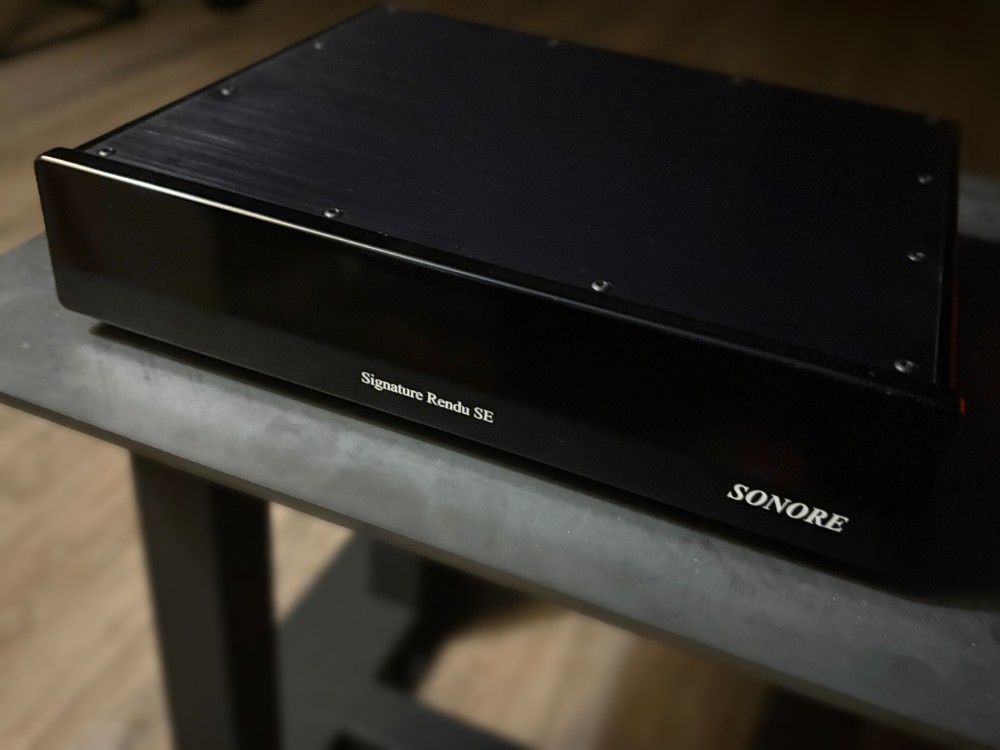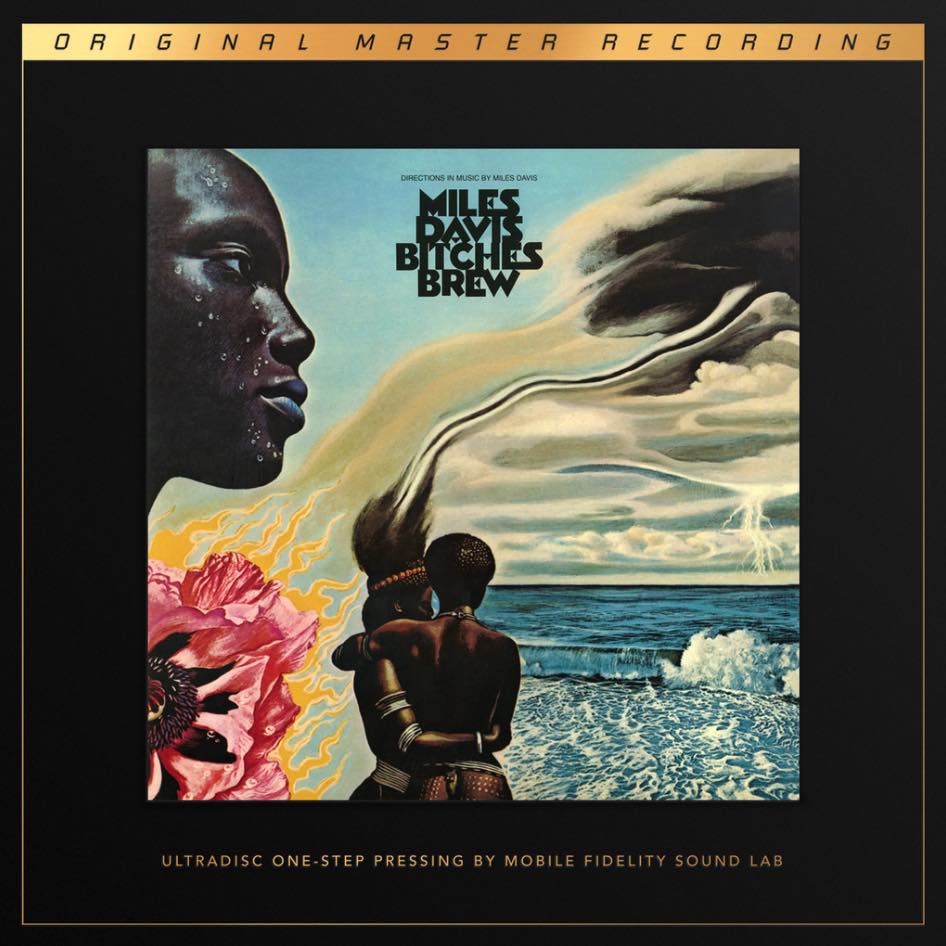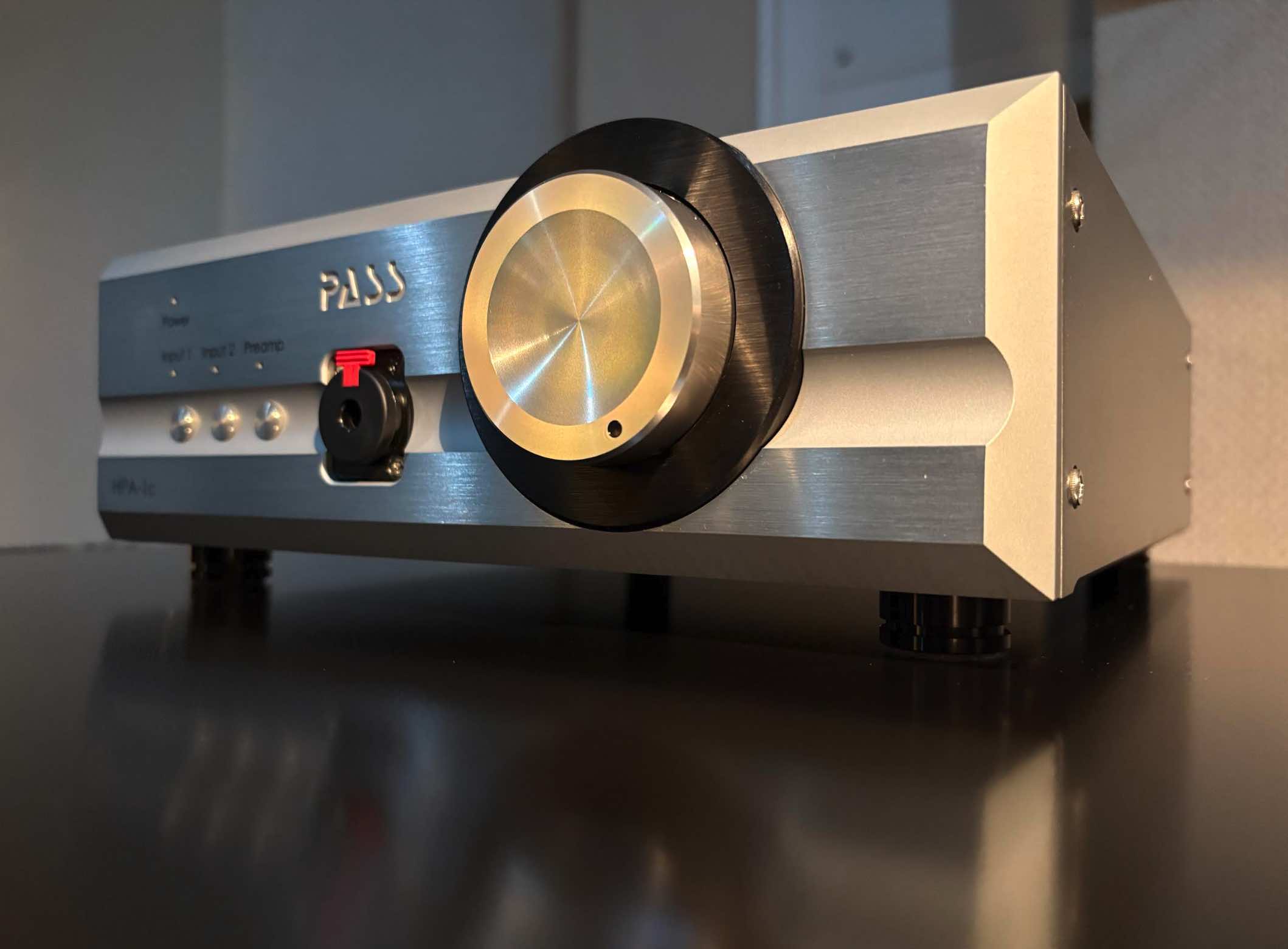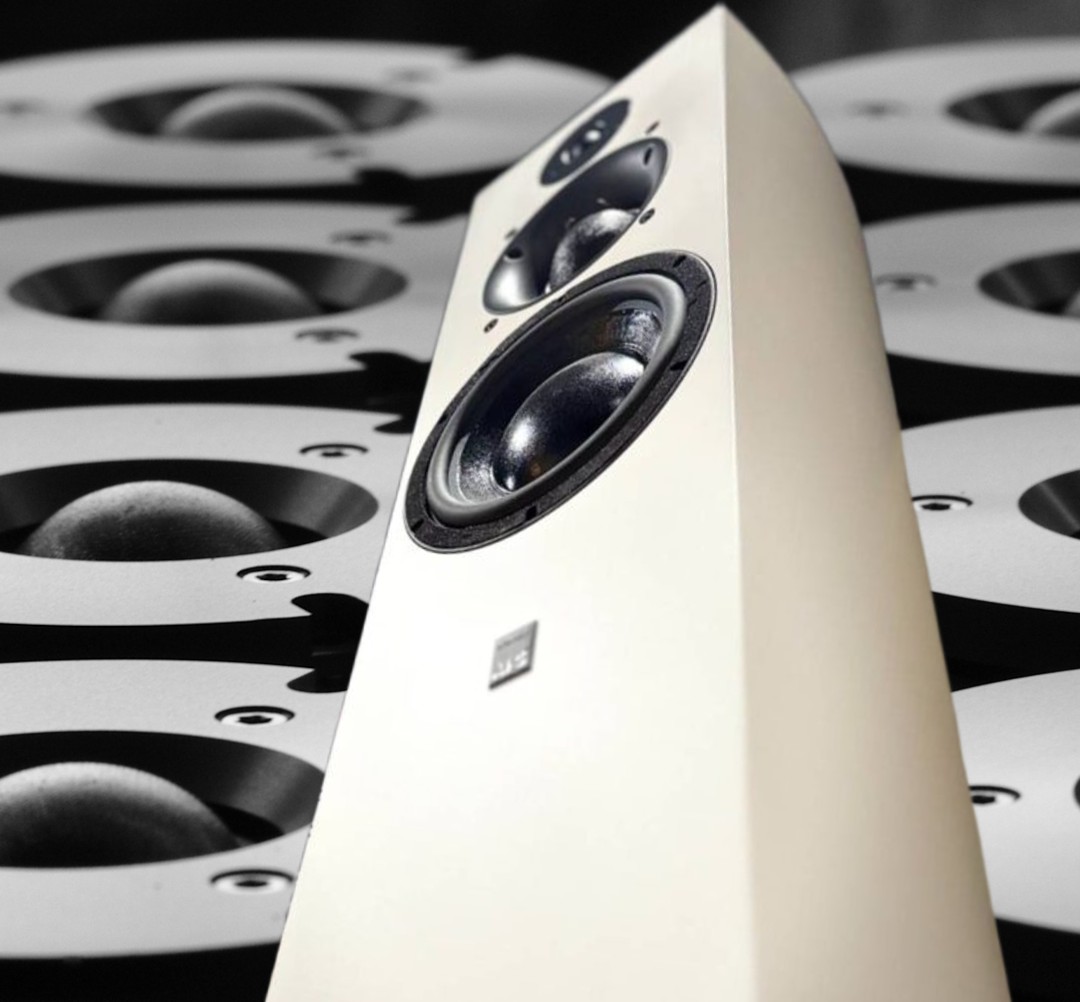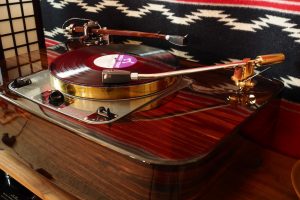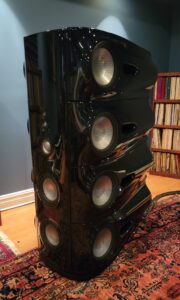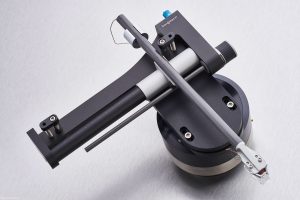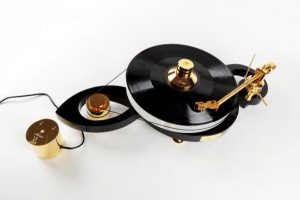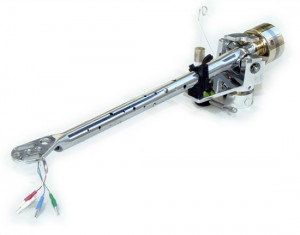Bicycle photo courtesy of Bossibicycles.com and SR-71 Blackbird photo by USAF Judson Brohmer and Wikimedia Commons
Replacing my turntable's stock tonearm with the Titanium-tubed Audio Creative GrooveMaster 3 conjures a 50-mile bicycle touring experience in the 90s. I wasn't a regular cyclist, and pedaling my heavy fat-tired steel Trek mountain bike on surface streets for distance was arduous. As I struggled, I envied the ease that others on slender, lighter-weight racing bikes—and thin tires—glided over the pavement with minimal effort. Although it's said that the GrooveMaster 3 has plenty of mass, I found its slender arm to be lighter, more agile, and responsive compared to my bulkier BL-91 stock tonearm.
The Titanium Edge
At the time of my bicycle tour titanium was making its way into higher-end racing bikes. Possessing a density of 4500 kg/m3 versus the 2712 kg/m3 of aluminum, it was notably heavier than aluminum. However, with its vastly greater strength, less titanium was required for a lightweight product in machining. (waykenrm.com)
What exactly is Titanium? It's a white-ish silver metal element with the atomic number 22. As such, it's a lightweight, strong, ductile, biocompatible, and corrosion-resistant metal with a high strength-to-weight ratio. As the ninth most abundant element on the planet, it's commonly found in clay, rocks, and sand. Ilmenite and rutile are two primary commercial minerals from which titanium is sourced and refined. The classification of Titanium falls into the following groups: alpha-alloys, beta-alloys, and alpha-beta alloys. Titanium alpha alloys are alloyed with only oxygen and are often alloyed with other metals, such as molybdenum, aluminum, and vanadium. Adding these metals enhances strength, and corrosion resistance, and reduces weight. (www.xometry.com)
The Lockheed SR-71 A Blackbird (Photo courtesy of https://media.defense.gov/ and Lockheed Courtesy Photo # C76-1097-4)
The skin of the Lockheed SR-71 Blackbird, which still holds the world record for a non-rocket powered plane set in 1976 with a speed of 2193.167 mph at a horizontal flight level of 85,068 feet, was Titanium, which made up 93 percent of its structure. (https://wisconsinmetaltech.com)
Although very expensive to refine (in its purified form it currently costs about four and a half thousand dollars per metric ton), Titanium is commonly used in aerospace and commercial applications, power plant condensers, desalination plants, marine applications, architectural products, joint replacement hardware in medical implants, and retail items like golf clubs and bike frames. (https://wisconsinmetaltech.com)
Bottom line, Titanium's combination of superb strength and lightness trumps that of steel and aluminum in racing bikes, making it extremely durable yet fantastic for the road or—as with the GrooveMaster 3—for a tonearm tube used in vinyl playback!
Jam Somasundram's Dr. Feickert Analague Woodpecker turntable is fitted with an S-shaped GrooveMaster 3 tonearm (which is available in banana and S-shapes), a Lyra Edna cartridge, and a Korf Audio HS-A02 headshell. (Photo courtesy of Jam Somasundram)
Turntabling with Titanium
This past year, after some research, I decided to step up my vinyl game and purchased a vintage Micro Seiki BL-91 turntable. It featured a stock, thick polished aluminum S-shaped tonearm that played well with my Ortofon MC Quintet Black S moving magnet cartridge.
However, I was looking for a universal reference tonearm that could be used with various turntables and cartridges, so I contacted Jam Somasundram, a friend, audio equipment designer, and president at Quadratic Audio who previously created the Pass Labs HPA-1 headphone amp that I reviewed (you can read that HERE). His Quadratic Audio MC-1 Step Up Transformer is performing admirably under evaluation in my system. As someone who uses Korf Audio and GrooveMaster tonearms and headshells (and select vintage tonearms) exclusively on his Micro Seiki 5000 and Dr. Feickert Woodpecker turntables for evaluation and design work, he recommended the Audio Creative GrooveMaster 3 tonearm. Not long afterward, introductions were made and soon I was playing vinyl with a renewed relish.
Enter Audio Creative with Marco Bouwer, at left, and Dick van de Merwe at HIGH END Munich (photos courtesy of audio-creative.nl)
Audio Creative is a company founded by Dick van de Merwe and Marco Bouwer in Raalte, located in the scenic Salland region of the Dutch province of Overijssel in the Netherlands, in 2012.
"We have been friends for over 30 years," Marco Bouwer writes. "Our friendship started with our shared passion for music and music experience."
"Dick has an electrical engineering background. He worked for many years in the defense industry on radar systems for F16 fighter jets and Leopard tanks, among others. After that Dick worked for 22 years on chip machines for ASML, since his school days, audio and music have been his passion.
"Dick van de Merwe has been developing and publishing high-quality tube designs under the name "Triodedick" since the advent of the internet. These designs are still being copied today by many tube amplifier enthusiasts.
"I have a Chemical background and worked for years as a Chemical Specialist for the coating additives industry," Marco Bouwer says. "My passion is mechanics and I have years of experience in mechanical processing and fine mechanics. At home, I have a workshop with various metalworking equipment, lathes, and milling machines where we can make our audio prototypes. So, with music and music equipment as a passion, the step to developing tonearms was quickly made."
Audio Reviewers and the Web Shop, Hobbies, and GrooveMaster Tonearms (photos source: audio-creativeshop.nl)
"In the past Dick and I have written reviews for various audio magazines in the Netherlands. After these magazines got an online life we decided to start our online audio magazine (www.audio-creative.nl) with a clear direction and topics for, among other things, do-it-yourself audio. Eventually, the webshop was added where we could offer our analog ideas.
"Our audio hobby focuses mainly on the field of analog audio. So we both have a nice chain of analog equipment including several Nakamichi cassette decks ( 1000 ZXL, CR7, Dragon, etc.) which we use daily. In addition to the cassette decks, we have several Revox Tape decks. We both have a large collection of vinyl and several Garrard 301 and 401 turntables at our disposal on which, of course, the GrooveMaster tonearms may play.
"Besides audio, we have common hobbies like playing guitar, photography, (bread) baking, and for me vegetable gardening.
"We have a worldwide dealer network for the GrooveMaster tonearms. The other products, parts for Lenco turntables, et cetera. we sell from our webshop, www.audio-creativeshop.nl.
"The GrooveMaster was developed for Garrard 301/401 and Thorens TD124 users. There are indeed many self-builders in this group. However, in recent years the GrooveMaster tonearm has been used on many High-End turntables. With the various mounting options, placement on any turntable is possible. The big advantage is that we can offer the GrooveMaster tonearms for various turntables with different lengths (9", 10", and 12 ").
"The GrooveMaster tone arms are suitable for many elements with a wide range of compliance (5-25 µm/mN). The idea that the GrooveMaster can only play low-compliant elements is a misconception."
The Ongoing Evolution of the GrooveMaster
"The GrooveMaster is still under development. In addition to the GrooveMaster 3, a GrooveMaster 4 tonearm has recently been introduced. With the GrooveMaster 4, careful consideration was given to where improvements could be made on reducing micro resonances as much as possible. This has resulted in choices in combinations of materials (stainless steel and brass).
"We are busy developing a GrooveMaster 1 as a 'drop-in' tonearm for the large group of Lenco L75 and Thorens TD160 enthusiasts. This group has many active users who are very active on social media.
"In addition, we have more than enough ideas that will keep us busy in the coming years."
Audio Creative's Take on the Soaring Prices of the HiFi Industry
"Regarding the current High End industry. We think it is completely out of control. A high price is only justified for products with vision, innovation, and quality. I think there are too many products marketing technical inventions where an existing design is put in a new jacket and offered for exorbitant prices.
"As for us, I think our products should be affordable or rather savable for a large group of music lovers."
Groovy Features and Benefits
The GrooveMaster tonearm draws heavily from the 1950s, when the demand for high-quality playback equipment was at a premium in the music industry as a whole, as well as wealthy connoisseurs, Audio Creative maintains. Building upon that foundation, it boasts the following features and benefits:
- Timeless Precision Transcription Player Design: "Previous equipment could not play back microgroove records without introducing massive noise and damaging the vinyl," hence the "transcription record player" came to be, their website reads. "These 'transcription record players' allowed for high-fidelity playback of microgroove vinyl." Designed to last a lifetime, the GrooveMaster III "...was developed according to the same standards as these classics."
- Materials: Boasting a titanium tonearm tube, it combines different high-quality materials, such as stainless steel, high-grade aluminum, and brass, reducing micro resonances and resulting in a cleaner sound reproduction. All parts are CNC machined with utmost precision, and the tonearm head is made of aluminum and has a beautiful silver or titanium grey color, applied through a high-quality anodizing process.
- Bearings: The GrooveMaster uses ultra-low friction horizontal and vertical half-ceramic bearings with a very close tolerance of ABEC7. The bearings are oil-free and therefore require no maintenance for a lifetime of operation. Because of these high-quality bearings with very low friction, the effective mass of the tonearm is less important.
- Proprietary Connector Pins: The GrooveMaster III tonearm cable connection was developed in-house. Unlike most connectors that have brass gold-plated pins (brass has very poor conductivity (IACS: 16) rather than pure copper (IACS: 101)), the GrooveMaster features a connector with silver-plated pure copper pins that ensures the passage of very small music signals so that also on a micro level no signal loss occurs.
- Resonance-Damping Counterweight: the counterweight uses high-quality materials that reduce resonance, resulting in a cleaner sound reproduction. The counterweight is very precise and VTF can be set at 0.01 grams.
- Magnetic Anti-Skating: Contactless magnetic anti-skating was chosen for the anti-skating properties. With a precisely designed anti-skating mechanism, anti-skating can be precisely adjusted with a micrometer.
- Premium Wiring and Connectors: Ultra-thin (38 AWG) pure (99.999%) silver wiring is used in the GrooveMaster tone arm to achieve as low as possible friction on the bearings. All connectors are custom made and the signal-carrying parts (i.e., headshell connector and tonearm connectors) are made of pure copper with a high conductivity (> 95 % IACS). Moreover, with the GrooveMaster, all signal-carrying parts are cryogenically-treated.
Set Up (photo courtesy of Audio Creative)
The GrooveMaster III arrives well-packed with an excellent manual, armboard, pivot-to-spindle mounting templates, protractor, hardware, and a handy metric Allen wrench set making this tonearm setup relatively painless. I say that with a caveat: If you've set up turntables before or have an experienced person who can help you, this should be a snap; if not, it might be best to hire a turntable specialist.
The GrooveMaster 3, banana-shaped, arrives in their Titanium Grey finish, with a stainless steel SME pattern sliding mounting base. The tonearm length of the review sample is 10", the pivot to spindle distance is 240 mm, the offset angle is 21.4 degrees, and the overhang is 16 mm.
Thankfully, the sliding base screws perfectly into the replacement armboard base for my Micro Seiki BL-91 turntable designed to accommodate it (the one that came with the Micro Seiki had a fixed collar plate).
The catch was that I had to do some serious online searching to find a good metal one; there was a plethora of plastic mounts available (which are less than ideal sonically), and although advertised as suitable for my BL-91 turntable, the first aluminum one I ordered was too large to fit. I got a refund from Amazon and eventually hit pay dirt with this one. The mount was secured to the Micro Seiki's plinth with four screws. From there, I then used their pivot-to-spindle template to place it at the proper distance. This process required patience and trial and error, as I had to unscrew, rotate, and reattach the armboard mount several times to get it right.
Placing the tonearm into the base was easy, but connecting the tonearm cable required turning my Micro Seiki turntable on its side or atop boxes at either side to access the tonearm plug, which sat recessed on the bottom side of the plinth. I then plugged in an Audio Arts prototype e2.2 Cryo-treated phono cable featuring their IC-3 UHP silver-plated OFC cable and Furutech's FP-110(G) 24-carat gold-plated locking RCA connector. (Later after fact-checking my draft, Marco emailed, "What I do myself is to put the tonearm cable through the sliding base first and then mount the tonearm on the cable and slide it into the sliding base with cable. Then you don't have to tilt your turntable.")
Connecting cartridge wires was straightforward. Some people recommend using tweezers with the wiring, while others don't, but by using my bare fingers, I secured them in about five minutes. However, mounting the cartridge to the headshell required a little more "stick-to-it-iveness"; handling those tiny screws with fat, stubby fingers and securing them is always an awkward endeavor for me. Initially, I went with the GrooveMaster's headshell, but after the highly-touted and lighter-weight ceramic Korf HS-A02 headshell arrived, that went in, and my language grew testier; the thickness of the Korf was beefier, making this more challenging. I dropped the tiny mounting screws at least a dozen times getting them to seat properly while rotating the GI Joe-sized screwdriver! Eventually, I used longer screws and soon enough was ready to set the tracking force with an electronic scale, align the cartridge and tonearm, set the vertical tracking angle, and adjust the azimuth (the angle of the stylus laterally to the record).
I ensured that the protractor and platter remained still during cartridge alignment with tape, set the vertical tracking force (VTF) for the GoldRing Ethos SE MC cartridge (also in for review), and adjusted the vertical tracking angle (VTA), making sure to cradle the tonearm assembly in one hand as I unscrewed the locking screw on the side of the sliding base so it wouldn't drop suddenly and risk damaging the stylus.
Next, I placed a small metal rod across the top of the headshell to ensure that, from the front, the stylus was 90 degrees—or perpendicular—to the record. The removable headshell attachment can be adjusted to rotate side to side with the loosening and tightening of a 1.3 mm Hex-drive set screw on the tonearm near the headshell. According to their chart, I carefully adjusted Anti-Skating to match the VTF with its frictionless magnetic micrometer. After rechecking VTF, I cleaned up and was soon listening to heavenly music!
I listened to albums, some that I'd had for years, and others that I'd recently purchased at neighborhood record stores. I took advantage of a Record Doctor X record cleaner being reviewed, and cleaned them up for a more transcendental listening experience (you can read that review HERE). In the process, I scored some points with Belle, who's not as emotionally vested in audio, by playing Carrie Underwood's two-disc My Savior LP album that I snagged for a bargain. Her vocals weren't simply sublime, but encouraging with their classic, gospel lyrics—which is comforting in these challenging days of social and political upheaval, uncertainty, and extreme weather.
Listening Impressions
Sometimes it's easy to forget how brilliant he was, however, this recording reminds us. Whistles and cheers give way to Stevie Ray Vaughan's bellowed declaration, "The Sky is Crying!" in his growling, gritty vocals accompanied by his wailing guitar in an avalanche of notes, whining riffs, sustained and bent pitches to the 12/8 time of Tommy Shannon's bass and George Rains' drums (Stevie Ray Vaughan, Martin Scorcese Presents Stevie Ray Vaughan. 2003 Sony Music Entertainment.) A triumphant blues classic, his rant drops down, slow and low to appreciative whistles and shouts, then rises again—dovetailing nicely with the slam on the snare and a crescendo of cheers. Detailed and immersive as rendered with the GrooveMaster 3 tonearm, it's vivid, tasteful, and moving.
The GrooveMaster 3 spotlit an old favorite, Straight to the Heart, by the late Grammy Award-winning saxophonist, David Sanborn, who recently passed away on May 12, 2024. An excerpt from my Record Doctor X review describes it this way:
"Keyboardist Don Grolnick lays down a pad in B minor as Marcus Miller eases into a quiet, contemplative precision bass solo. Miller's right hand tickles the bass strings as deft ebony fingers on his left bend them in intricate patterns on the fretboard with increasing rapidity as drummer Buddy Williams keeps time on Hi-Hat and bass drum. It's the opening moments of David Sanborn's live recording of "Run for Cover" (David Sanborn, Straight to the Heart. Warner Brothers, October 2, 1984).
"Suddenly, Miller's right hand "pops"—or pulls the bass strings away from the fretboard and quickly releases it, snapping it back into the board—and drops into a blazing thumb-slap fest! Williams joins in with loud cracks of his snare, in four-four time, as the crowd cheers and claps, with Sanborn and Grolnick leading, as Miller holds court with his sizzling solo. Then, the rich, resonant, and bright tone of Sanborn's alto sax's melodic wail cuts through the drums, bass, percussion, keys, and guitar to take the lead...(Furthermore), the vinyl's luscious, rounded, and full-fleshed waveforms, the balance of textural detail and tone....(with) a GrooveMaster 3 tonearm...(and) a Korf HS-A02 ceramic headshell—shine unencumbered."
The strength and richness of Nina Simone's ebony contralto vocals stand strong against a deep bass, piano, and understated drum kit in "How Long" (Nina Simone, Here Comes the Sun. RCA, 1971.) They're at times very strong, others tender with a slight vibrato. Accompanied by strings, female vocal backdrops, and a little Wurlitzer zest yields a vibrant period piece that transcends the era in which it was ensconced. I find a tiny note at the bottom of the album cover ironically coincidental: "RCA records may be played by any modern phonograph with a lightweight tone arm. You will hear excellent sound reproduction on a mono player and full stereo sound on a stereo player." With the GrooveMaster 3 tonearm in play, this promise is fulfilled—and then some!
Miles Davis's trumpet plays rich and plaintively against the backdrop of Ron Carter's double bass, the brass section and woodwinds of Gil Evans' orchestra providing a little sparkle and texture in this layered take on this Jobim classic, "Corcovado" (Miles Davis Quartet, Quiet Nights. Columbia, 1977). The song fades, and then the real magic begins: Victor Feldman's soft piano intro kicks off "Summer Night." Followed by Miles Davis' trumpet, muted and mournful, they weave a spell-binding story accompanied by Frank Butler's brushed snare and Hi-Hat and Carter's spare bass. It's altogether lovely. The piano is resonant, keystrokes clearly defined in the space, echoing slightly. Davis' trumpet notes glisten, fleshed out in their fragile brilliance. And in the waning moments, you can hear Miles' raspy voice say, "We'll go hear another one, T…" It's classic, realistic, and vibrantly delivered by the GrooveMaster 3.
Concluding Thoughts
The Audio Creative GrooveMaster 3 tonearm came with a well-earned reputation for excellence for the money, and it left no doubt that inserting it in place of my stock tonearm was an excellent upgrade. Like switching from a bulky mountain bike to a svelte racing bicycle for a street rally—or loudspeakers using a pair of fast eight-inch drivers instead of a single 15" woofer—the GrooveMaster was fleeter and more nimble, making a noticeable improvement in responsiveness, sensitivity, and detail. It's a beautiful instrument, a versatile, universal tonearm suited for a wide variety of turntables, and one that I can't see myself parting with anytime soon. I highly recommend it.
GrooveMaster 3 Tonearm
Retail: € 2388 ($2598 US)
Audio Creative




